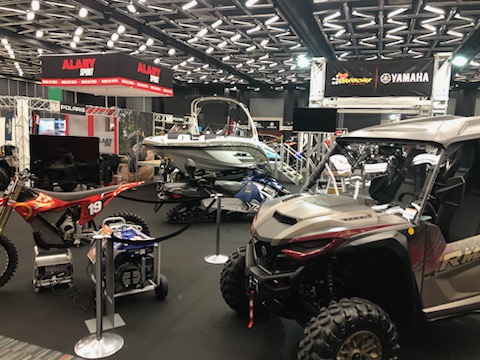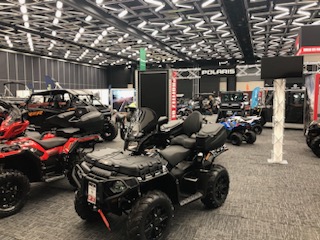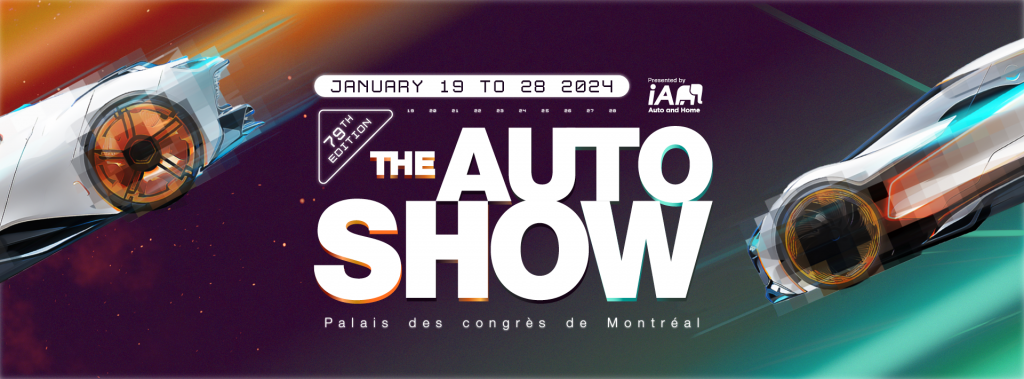
APA Director George Iny and Road Test Co-ordinator Gilles Pilon attended the Media Day for the second Montreal car show since the end of Covid. The Salon International de l’Auto de Montréal public days run from January 19th to the 28th at the Palais des Congrès convention centre in downtown Montreal.
Last year’s Salon de l’auto attracted just under 150,000 visitors, an impressive number considering how many brands did not participate; that’s only 36,000 less than attended in 2020, the last year pre-Covid. None of the German luxury brands are attending, nor are Honda and Subaru, an odd decision as both Japanese carmakers have very strong followings in Quebec. Some of the attention will likely migrate to the separate Salon du véhicule électrique de Montréal, with an abundance of automobiles, e-bikes, motorcycles, scooters and all manner of electrified conveyances, scheduled to be held at the Olympic Stadium from April 19th to the 21st. Last year it attracted about 25,000 visitors.
This year’s Media Day was a low-key affair, with no government ministers attending to introduce new vehicle programmes and no announcement of finalists for Car/Pickup/SUV of the year. In its own way, the complete absence of hype on the media day was unique. A highlight was Montreal Canadiens hockey great Yvan Cournoyer, who made a guest appearance to support Hyundai Canada’s marketing partnership with the NHL.
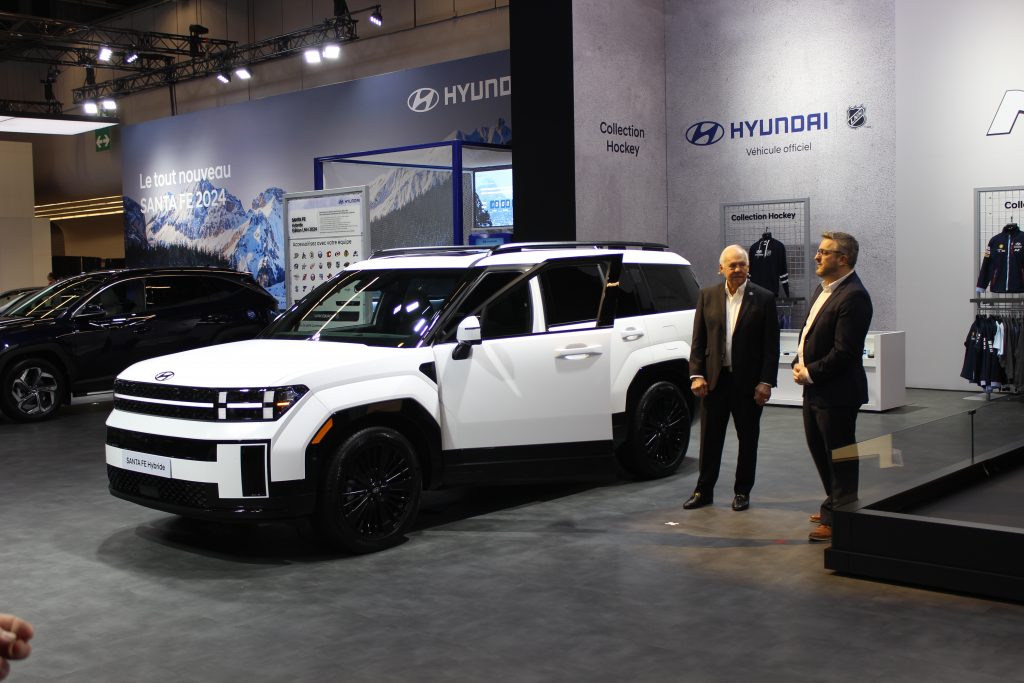
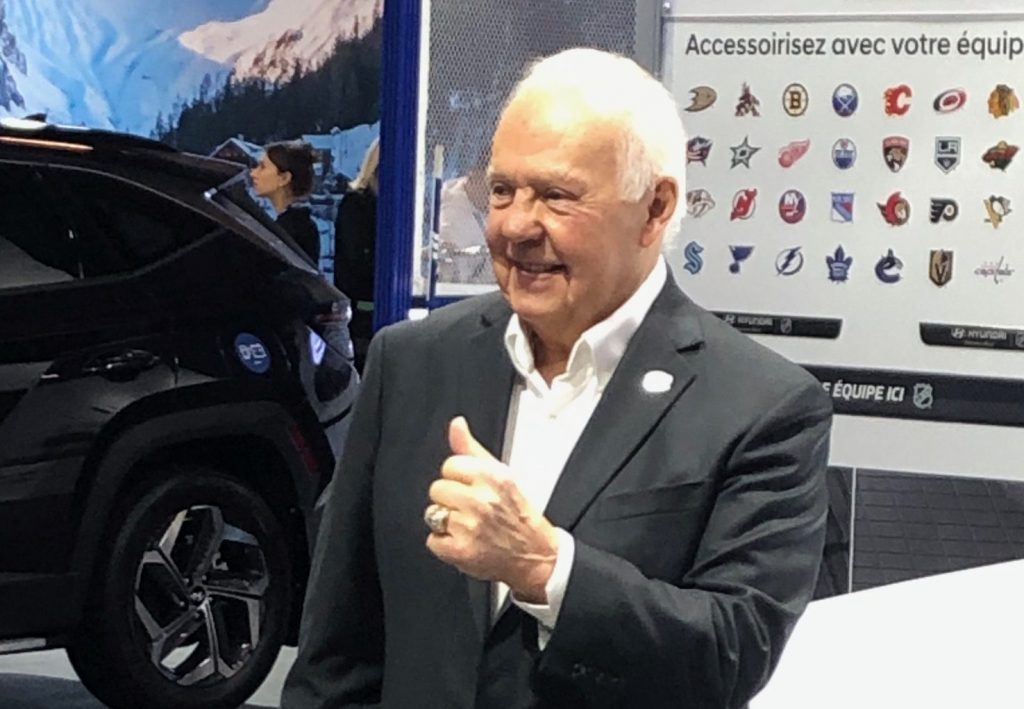
The APA had the opportunity to exchange views with former Quebec Minister of the Environment and EV proselytizer Daniel Breton on the media day of the show. Breton’s take on user concerns about the unreliability of EV charging networks is that it’s a temporary bump on the road to electrification. When challenged by the APA’s road test director Gilles Pilon, he allowed that the Petro Canada network of fast chargers is unreliable and contributes to a poor reputation for the entire EV charging network. Breton said his group, Electric Mobility Canada, will be coming out with comprehensive ratings for the different charging networks in Quebec.
Breton is unfazed by the challenge of retooling Canadian cities within a decade with a charging infrastructure to serve apartment dwellers and people who park on the street. He was optimistic about battery development, pointing out that we are only 2-3 years away from recycling lithium-ion batteries at scale. He says mining is getting cleaner as new sources are coming onstream, and that new lithium-iron-phosphate chemistry promises to dramatically reduce the price of batteries. Breton is absolutely certain that it will require a government mandate for large-scale recycling to become a reality and thinks that there will continue to be a demand for recycled cobalt and nickel even if battery chemistry changes significantly by the time today’s EVs are at the end of their life cycles (which it certainly will).
Breton reminded the APA that oil extraction isn’t getting any cleaner, observing that 70% of Canada’s production is from the tar sands, which have a large negative environmental footprint.
The APA didn’t bring up issues with the excessive power and weight of new electric vehicles. Historically, fast and heavy vehicles have contributed to higher fatality rates. And with their tall hoods and bluff front ends, SUVs — be they EVs or gasoline powered — are more lethal to pedestrians and cyclists than passenger cars.
Here’s a review of some of the reveals at the show:
Hyundai
Hyundai sold a record 115,000 vehicles in Canada last year, this despite supply shortages and long delays for some models.
The redesigned Santa Fe SUV is an important model for Hyundai. The Santa Fe moved significantly upscale this year, with its former niche now occupied by the smaller, but no longer small, Tucson. The new vehicle is a three-row crossover powered by either a 267 horsepower 2.5L gas turbo or a hybrid electric vehicle with 232 horsepower. In a move away from the polarizing (but warmly embraced by the public) style of the current Tucson and Elantra, the 2024 Santa Fe features a more trucklike, rectilinear look that is close to that of the new Toyota Land Cruiser. If Hyundai can supply hybrid drivetrains, the Santa Fe will be very popular. Wait times for the previous hybrid were up to a year, which is faster than Toyota but can’t match the availability of Honda’s CR-V hybrid. An NHL Edition limited to 500 units is exclusive to Canada. All NHL Editions are painted white and buyers can choose floor mats with the logo of the NHL team of their choice. The XRT version, with offroad add-ons, 1.4 inches more ground clearance and a towing capacity of 4500 pounds, is new this year. The Santa Fe arrives this spring.
Hyundai and subsidiary Kia offer a wide variety of compelling hybrids and BEVs but concerns over long-term durability and the ability of both companies to resolve problems that develop, remain.
Hyundai also showed a hyper-performance N version of its Ioniq 5 EV. In a “Nothing exceeds like excess” vein, the N is rated at 601 horsepower, with 641 horsepower available briefly by using controls on the steering wheel. That’s over 85 percent more than the 325 horsepower of the regular dual-motor Ioniq 5. Does anyone need all that power, when the standard model already accelerates quickly? (You know the answer.)
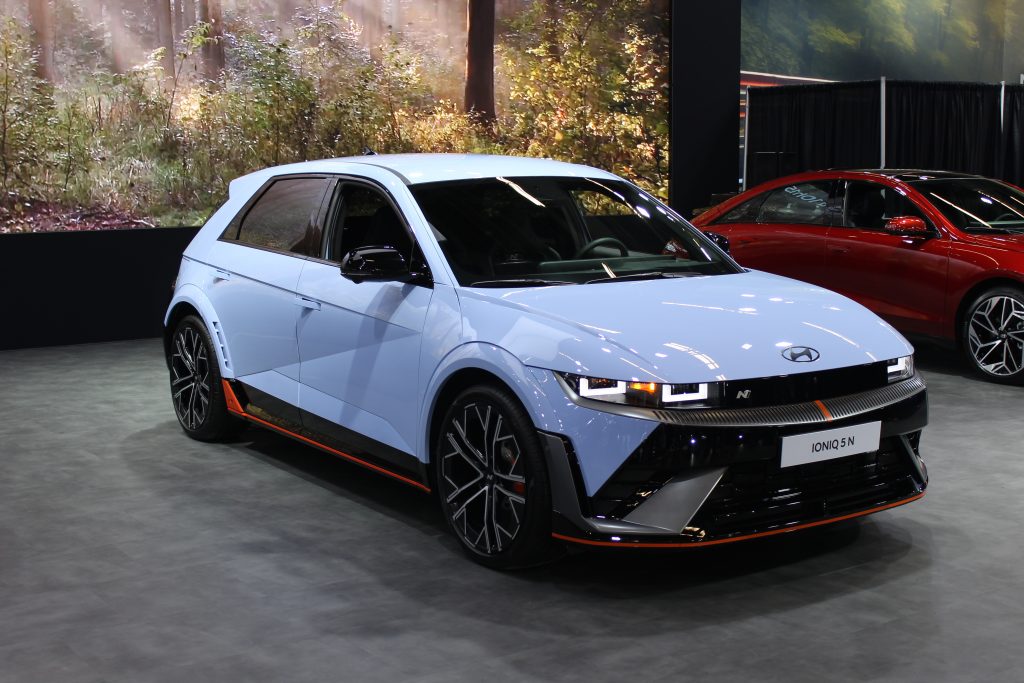
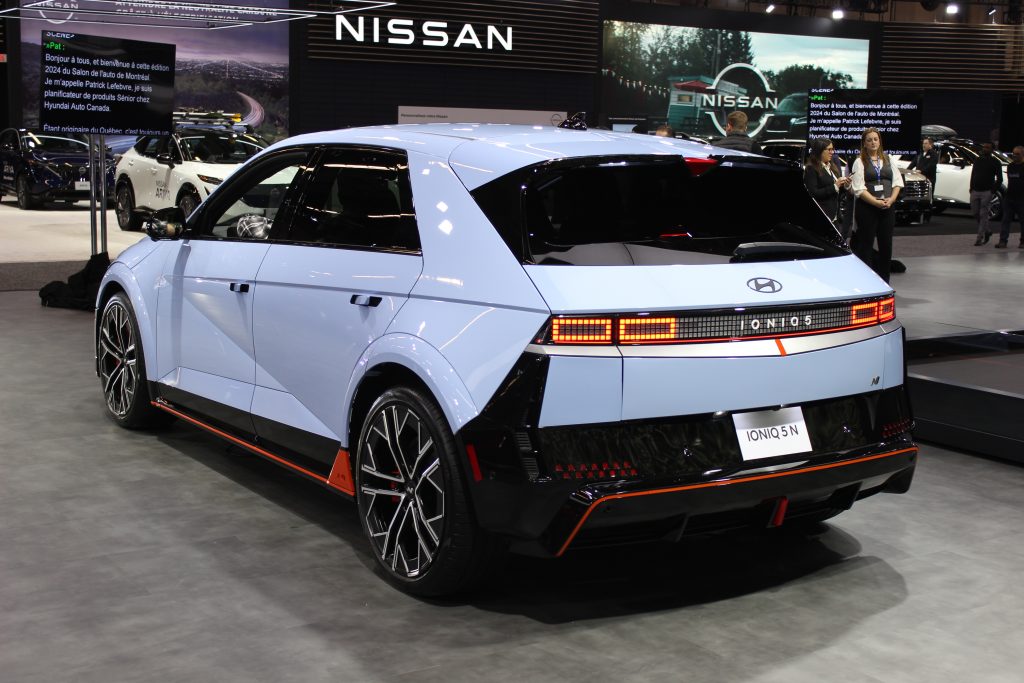
Kia
Kia sold 85,000 vehicles in Canada last year, more than Subaru, Mazda, and Volkswagen. That’s impressive considering Kia’s mediocre Canadian distributor and lacklustre customer satisfaction. Kia’s sales success is all the more remarkable in light of a recent CBC television report that claimed Kia was deliberately throttling customer deliveries in Canada during the last quarter of 2023 to hold the line on sales! Kia’s strengths are compelling designs in all segments, from the least expensive to the top end of their range and good content for the money. The downsides are loads premature engine failures that the company is not keen to take responsibility for affecting model years 2011-2018, and a network of slippery car dealers.
Kia unveiled the new EV9. According to Kia, it is the first to market with a three-row electric SUV in the supersized SUV segment (not counting the more expensive R1S model from boutique BEV maker Rivian). Kia reports that the entire year’s allocation of EV9s for Canada sold in just 93 minutes after the vehicle became available online (!)
The Sorento receives a handsome refresh with front and rear updates as well as a new optional dash display made of two 12-inch screens, a digital-entry key (sharable via smartphone), an improved Head Up Display, and a more advanced semi-autonomous driving system. A new three-row X Pro version with 4500 lb towing capacity follows the Subaru Wilderness concept that has proven to be very popular on the Forester compact SUV. The updated Sorento will arrive in the next few weeks.
Kia’s stand features a sophisticated display with interactive information on its environmental pledges and use of recycled and environmentally responsible materials in its vehicle interiors.
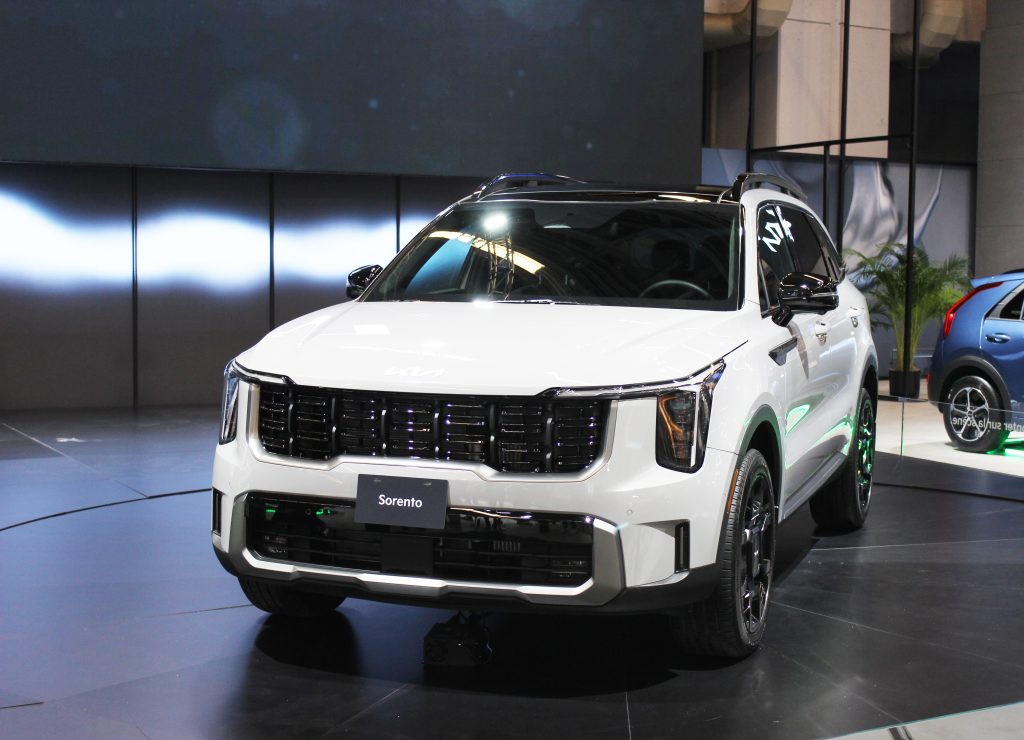
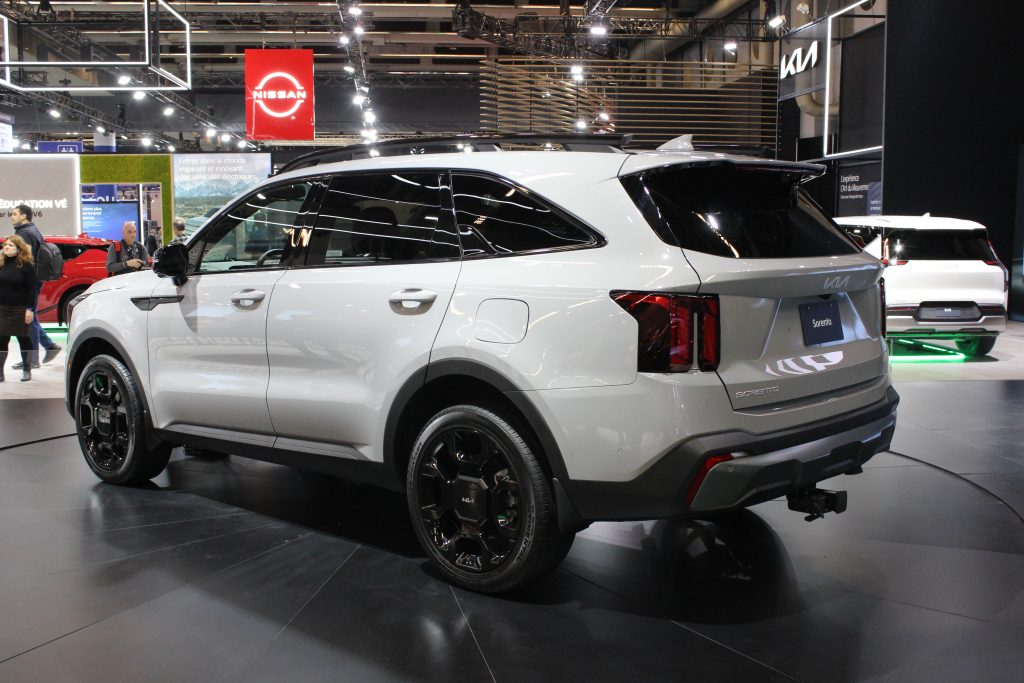

Tesla
Club Tesla Québec had a display at the Salon featuring the new Cybertruck, a 6,800-pound monster made of stainless steel. Like other Teslas, it is a breakthrough vehicle that pioneers several new technologies and stretches the definition of what competing vehicles in its segment are supposed to do. When initially shown, the outlandish, angular Cybertruck was perceived as an audacious concept, with a more conventional pickup to follow for eventual production, but the “normal” truck never materialized. While other Tesla models adhere to clean, rounded shapes, the angular Cybertruck may be a bridge too far in the opposite direction. A stainless- steel body was tried before on the DeLorean DMC 12 in 1982 (the car made famous in the movie the Back to the Future). People have strong emotional attachments to colour and the one-colour monochrome finish is likely to start a cottage industry in colour-wrap customization. The APA is concerned that the hard stainless steel exoskeleton (Will it crumple in a collision? We’re not so sure… watch the Tesla hammer test). The wild performance, high weight and blunt front end will be lethal for occupants of other vehicles in a collision. At over 6,000 pounds the Cybertruck may well require a commercial vehicle registration and twice-yearly inspections in some jurisdictions.
Vinfast

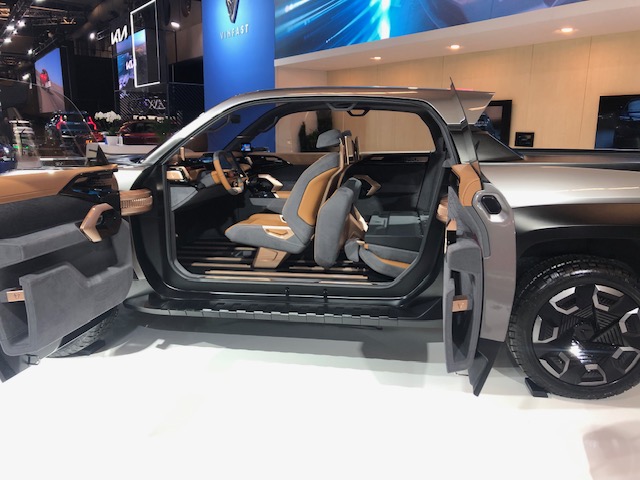
VinFast is a fledgling Vietnamese company with a small toehold in Canada; it currently sells one model, the VF8, with the large VF9, now being available for order. The Vinfast website also shows proposed compact VF6 and VF7 models. Early reviews of the VF8 indicate it’s full of bugs; it would be best to wait a couple of years for the automaker to work them out.
VinFast created a splash at the Salon by displaying a handsome electric pickup called the VF Wild, straight from its display at the Consumer Electronics Show in Las Vegas. Vinfast was overwhelmed by the high level of interest in their creation and they’re considering producing the concept truck when an anticipated U.S. production facility comes onstream in two years’ time.
Like Tesla, Vinfast is an all-electric brand, and like Tesla it sells direct-to-consumer online at fixed posted prices. Currently there are nine sales and service centres in Canada clustered around Montreal, Toronto and Vancouver, with another four scheduled to open soon. That’s more plentiful than the three offered by EV maker Polestar.
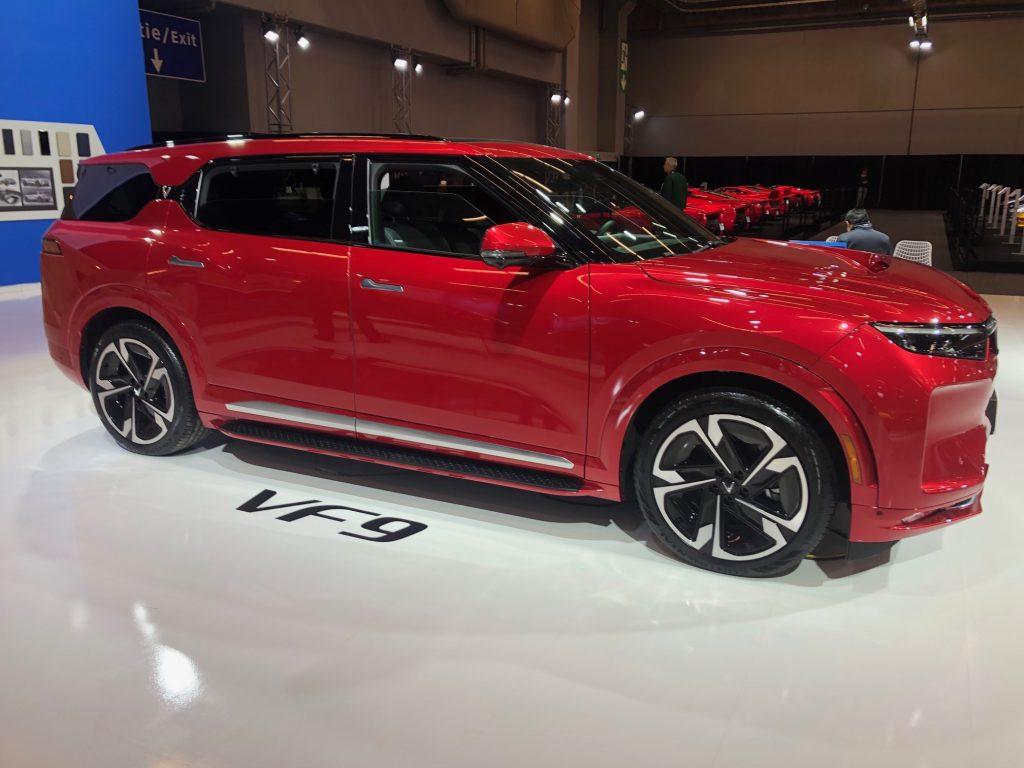
Toyota
The 2025 Camry is an update, featuring revised front and rear ends, with the centre structure of the car unchanged. Bizarrely, at a time that Toyota cannot or will not produce sufficient hybrid powertrains for Canada, Toyota has elected to make the 2025 Camry exclusively hybrid. When it elects to supply them, Toyota builds peerless and proven hybrid powertrains; the updated Camry will be a good performer and should deliver astounding fuel economy for a big car. However, delivery delays will likely be protracted and Toyota is ceding the big sedan hybrid market to Honda, which is able to deliver a new Accord hybrid with little delay.
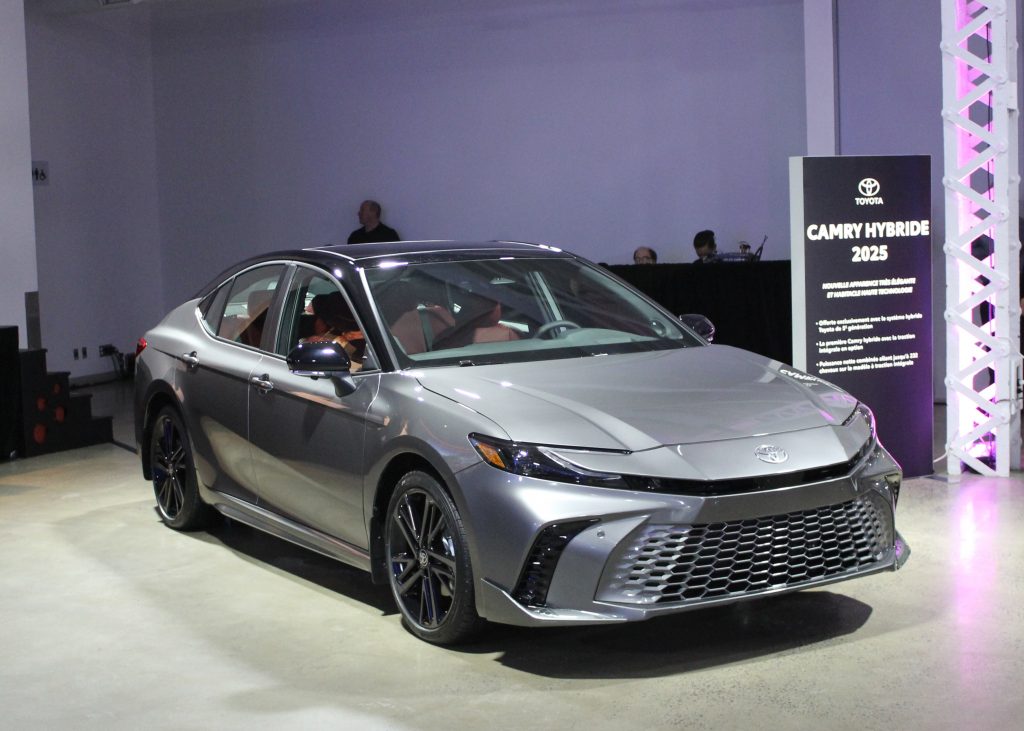
Other show exhibits
To round out the show, there are some interesting themed vehicle collections, including a stand with 32 Ferraris going back to the mid-1960s, a tuner stand that saw the return of customized vehicles, some of which were present at previous shows, and a collection of Shelby Mustangs going back to 1968, as well as a Shelby Cobra replica.
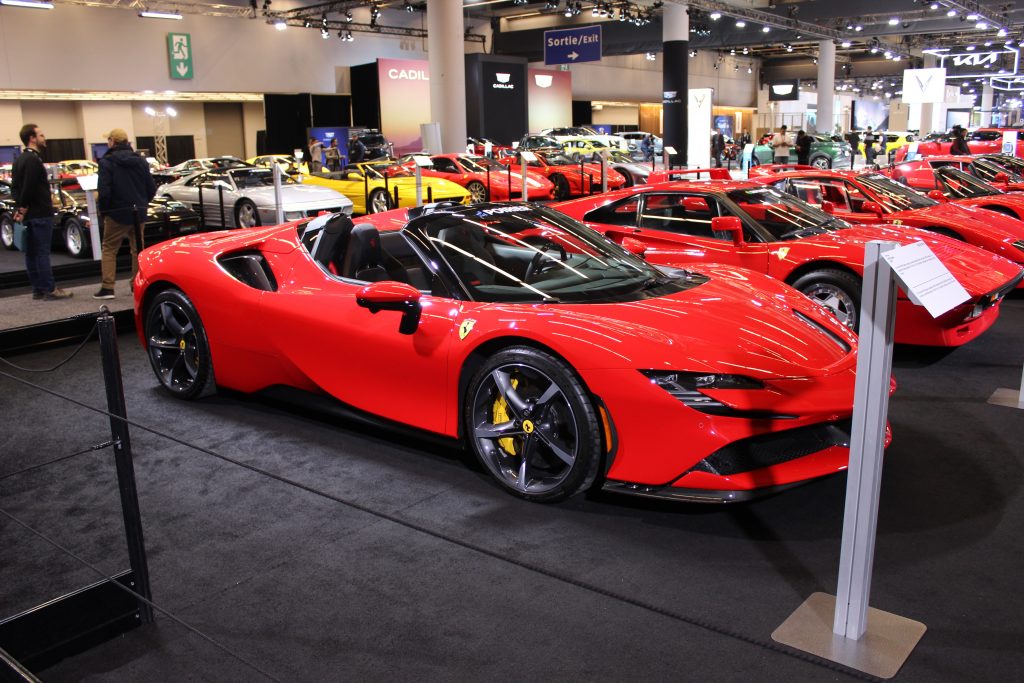
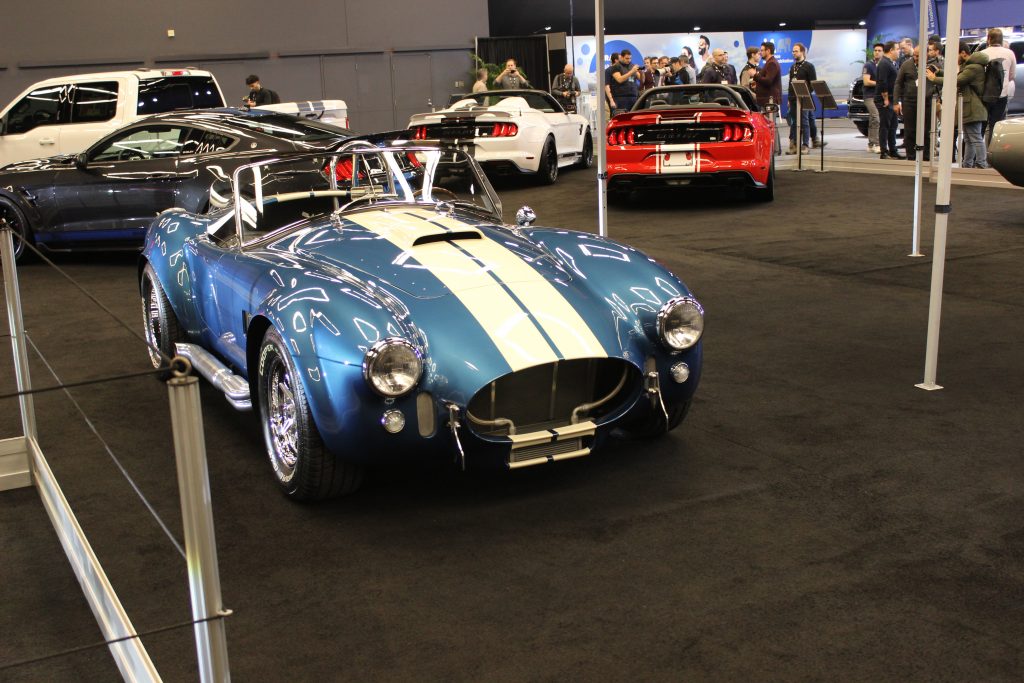
The fifth floor had a gigantic display of Polaris four-wheelers and Slingshot three-wheelers, motor boats and campers – it’s a strange hodgepodge for a car show but that was a way to fill the space left by the non-participating automakers.
